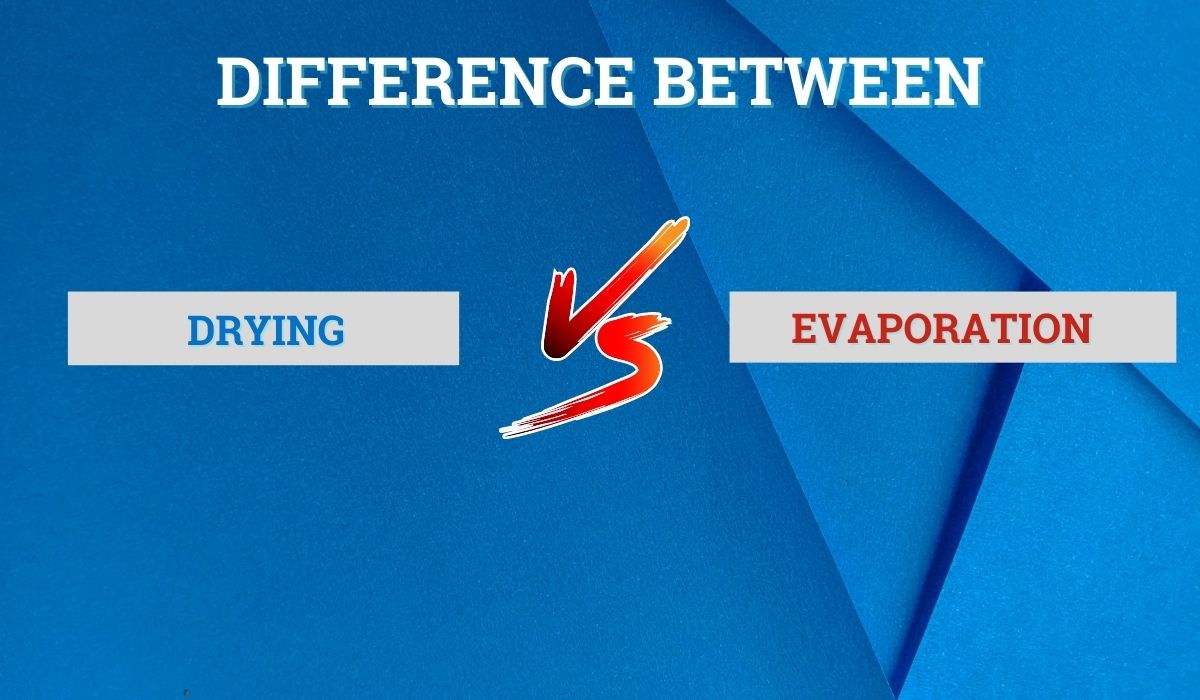
Difference Between Drying and Evaporation
Evaporation and drying are two processes that are frequently mixed up, but they differ significantly. For a range of applications in industries including food processing, pharmaceuticals, and chemical manufacture, it’s crucial to understand the distinction between the two processes of drying and evaporation.
Both processes effectively remove extra moisture from objects, but depending on what needs to be done, each has distinct advantages. For example, evaporation is your best option if you need something dried quickly, whereas drying can be a better overall option if you want something fully dry.
What is Drying?
To lower the amount of water in an object or material, moisture must be removed through the drying process. This can be accomplished using a number of techniques, such as air drying, oven drying, or freeze-drying. This procedure aims to lower the water content to a level where it won’t interfere with storage or stability over time.
One of the earliest types of dehydration is natural or air-drying. In order to evaporate moisture content over time without using extra energy sources like electricity or gas heaters, it often entails exposing materials to warm temperatures and low humidity levels.
Mechanical dehydration removes moisture from materials more fast than natural techniques would allow thanks to devices like centrifuges, vacuum pumps, freeze dryers, etc. that use physical forces rather than just temperature changes (e g within minutes).
What is Evaporation?
The process of changing a liquid into a gas is called evaporation. When the liquid’s molecules take in energy and become excited, they separate from one another and enter the atmosphere as vapor. Every day, we may observe this process taking place all around us, such as when water boils on a stove or sweat evaporates from our skin.
Temperature, humidity, and wind are a few of the factors that affect how quickly water evaporates. The rate of evaporation increases with temperature, which is why hot days typically feel more humid than chilly ones because there is more moisture in the air as a result of higher rates of evaporation from adjacent bodies of water like lakes or oceans. Even while temperatures are high enough for rapid evaporation on other days, less moisture will be able to escape into the sky on dry days with little wind movement, resulting in lower levels of humidity overall.
We find examples of this phenomenon occurring all around us in daily life: After a rainstorm has stopped, you might notice how quickly puddles start drying up due to their own natural processes involving both condensation (water droplets forming) and subsequent rapid rates of evaporation! This is similar to how when you take a shower, your body absorbs some heat energy causing it to perspire which then evaporates leaving behind that “freshly washed” feeling!
5 Difference Between Drying and Evaporation
| Drying | Evaporation | |
| Definition | The process of removing moisture or liquid from a solid material, typically by exposing it to air or heat | The process of converting a liquid into a gas by applying heat or reducing pressure |
| Purpose | To remove moisture or liquid to prevent spoilage, improve texture, or prepare for further processing | To concentrate a liquid, separate solutes from solvents, or create a gas |
| Material State | Typically involves a solid material with moisture or liquid content | Typically involves a liquid material |
| Temperature | Drying can occur at room temperature or with the application of heat | Evaporation requires the application of heat or reduction in pressure |
| Process | Drying is typically a slow process that occurs over a period of time, with the material gradually losing moisture or liquid content | Evaporation is typically a faster process that occurs quickly once the necessary conditions are met |
I hope this helps clarify the difference between drying and evaporation! you can also check out difference between drying and dehydration.

